Techno is not just a genre 一 it’s an entire experience.
With its pulsating beats and hypnotic rhythms, it can captivate a crowd, transport listeners to another realm, and evoke powerful emotions.
As a music producer, it is essential to know the most popular chord progressions in techno (and other electronic music genres).
They serve as the backbone of your track, providing it with depth, emotion, and energy.
By understanding these progressions, you can infuse originality into your creations, stand out in the saturated music landscape, and communicate your musical vision.
In today’s article, we’ll be breaking down:
- The importance of chord progressions in electronic music ✓
- Music Theory fundamentals you’ll need to know ✓
- EDM & Techno chords and their structure ✓
- Sound design tips for writing chord progressions ✓
- Major and minor key differences ✓
- Top 5 Techno (and EDM) chord progressions ✓
- How to successfully build tension ✓
- Advanced techniques & tips for unique chord progressions ✓
By the end of this blog post, you’ll know everything about techno chord progressions and their hypnotic nuances.
This will empower you to create harmonically rich soundscapes that resonate with audiences.
As well as produce music that has an authentic, original feel with the finesse and expertise of a professional.
So, let’s dive in…
Table of Contents
- The Importance of Chord Progressions in Electronic Music
- The Use of Major Chords and Minor Chords
- Understanding the Basics: Music Theory for Techno,
- Sound Design: Making Your Chords Shine
- 5 Most Popular Techno and EDM Chord Progressions
- #1. I-V-vi-IV
- #2. vi-IV-I-V
- #3. ii-V-I
- #4. IV-V-vi
- #5. I-IV-vi-V
- Final Thoughts
The Importance of Chord Progressions in Electronic Music
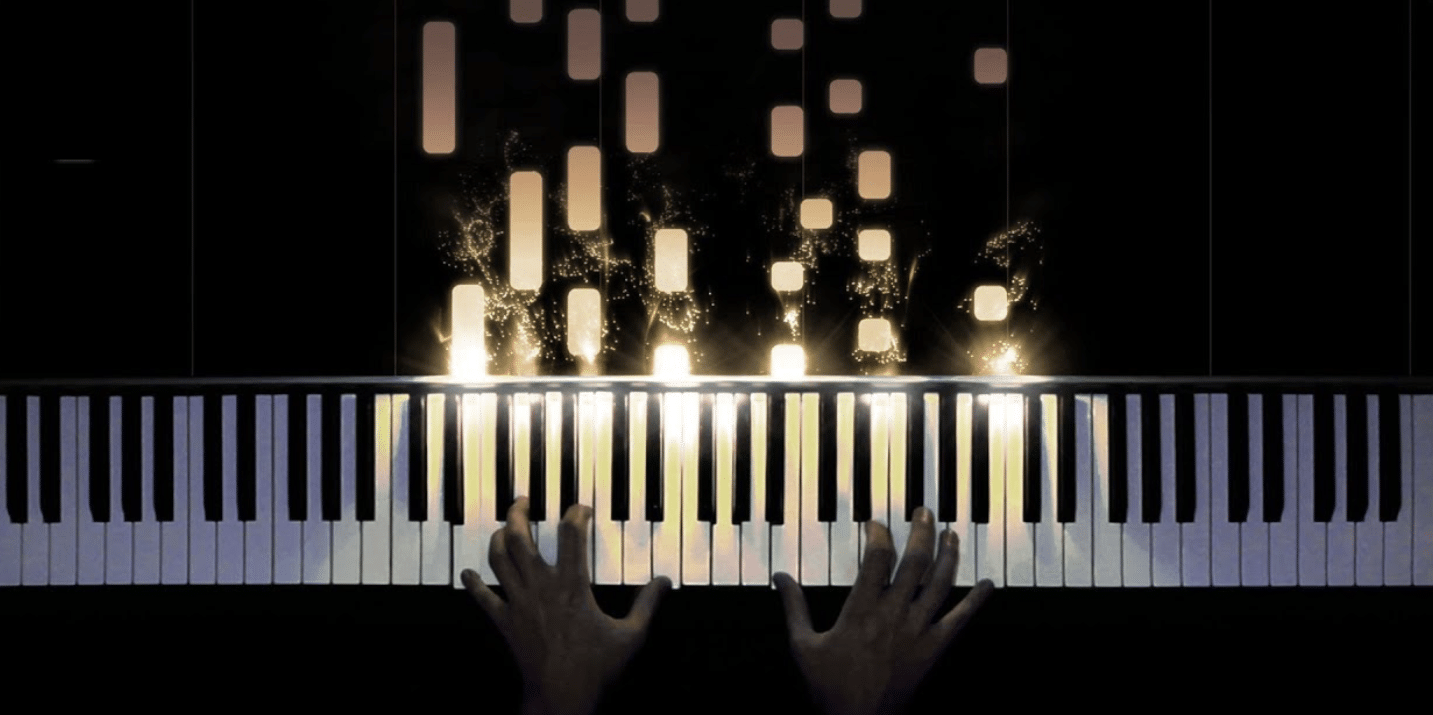
Chord progressions are the foundational pillars in electronic music production, providing structure and depth to your compositions.
They serve as the harmonic roadmap, guiding listeners through the emotional development of a track.
Chord progressions are pivotal in creating memorable and evocative electronic music tracks that instantly captivate.
Their strategic placement can elicit profound emotional responses, from euphoria to introspection.
This ensures that your songs naturally sound good and leave a long-lasting impression.
The evolution of electronic music showcases the nuanced use of chord progressions.
They’re not just a series of chords but a tool for innovation 一 allowing artists and producers to experiment and carve out distinctive soundscapes.
As digital music producers, understanding the intricacies of EDM music chord progressions is essential.
It can help you successfully make your song sound anxious, sound restless, or incredibly uplifting and motivating.
Mastering Techno and EDM chord progressions can elevate your track to stand out in the electronic music landscape.
The Use of Major Chords and Minor Chords
Major and minor chords are the two kings of harmony in most genres, and techno is no exception.
The prominence of a minor or major chord is attributed to the distinct emotional resonance each brings to a song.
You might be thinking, “Aren’t they just the same chord moved around slightly?”
The answer is absolutely not.
-
Major Chords
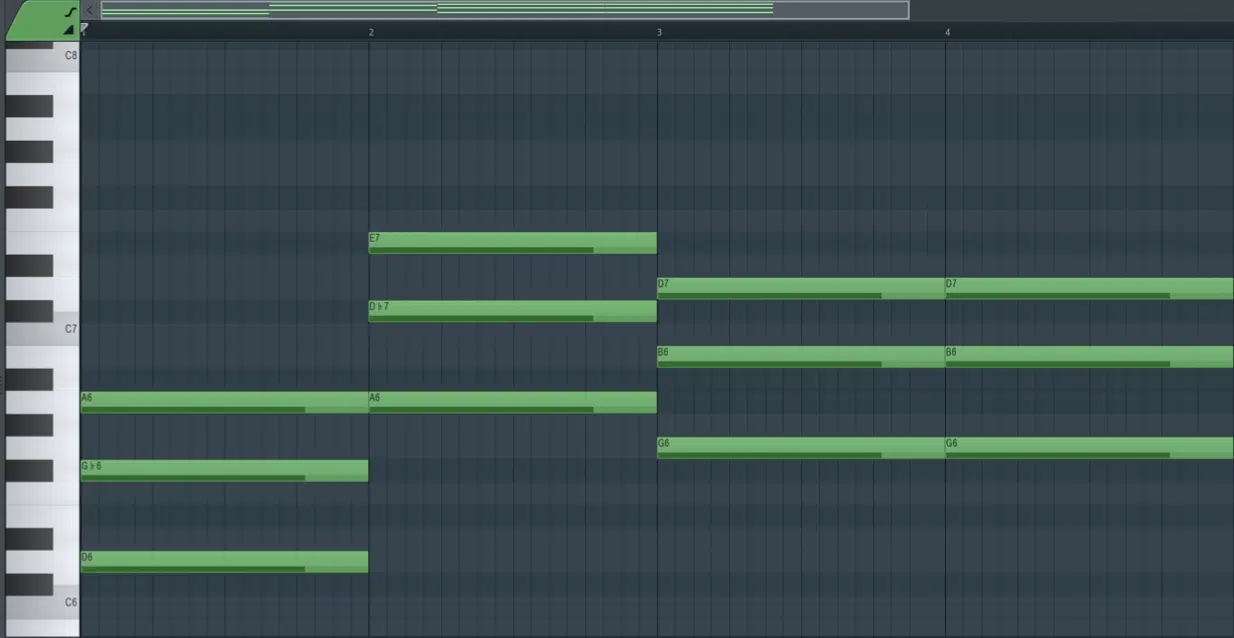
Major chords, denoted by uppercase Roman numerals, exude brightness and optimism.
When integrated into EDM tracks, they uplift the audience and create anthemic moments that resonate across dance floors.
While a major chord is meant to sound happy, remember that you can get creative.
If you’d like to know everything about major chords, we’ve got you covered.
-
Minor Chords
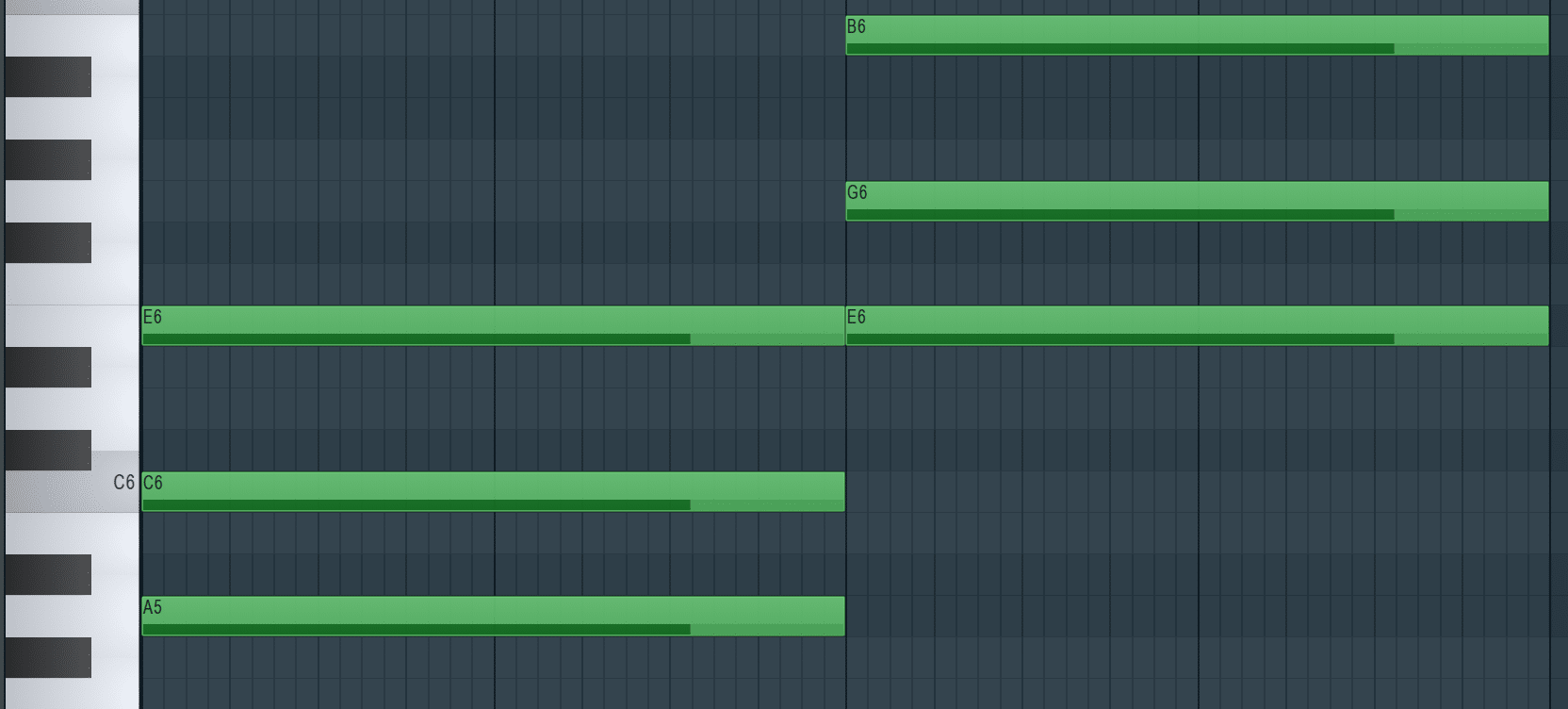
Minor chords, on the other hand, are represented by lowercase Roman numerals and convey depth and introspection.
Their moody undertones can drive a techno track into darker territories 一 making them invaluable tools for producers aiming for a deeper sound.
By judiciously integrating major and minor chords, electronic music creators can craft intricate emotional journeys.
This intricate dance is crucial, allowing your song to evolve and surprise the listener.
If you’d like to know everything about minor chords, we’ve got you covered.
NOTE: When learning about Music Theory regarding techno chord progressions, you must know the Roman Numeral system.
Major Chords use uppercase Roman Numerals (e.g. I, IV, V), and minor chords use lowercase Roman Numerals (e.g., ii, vi).
Understanding the Basics: Music Theory for Techno,
Delving into techno chord progressions requires a foundational understanding of music theory.
Let’s unpack some essential concepts in techno, EDM music, and pop music.
-
The Importance of Diatonic Chords in Electronic Music

Diatonic chords, derived from the major and minor scales, play a pivotal role in establishing the harmonic context of electronic music tracks.
They naturally occur within a given key, ensuring coherence in the track’s sound.
In electronic music, diatonic chords fit naturally and are essential building blocks you must be familiar with.
Their strategic placement within a track can create dynamic shifts in mood and energy.
Using diatonic chords ensures that the notes and chords revolve within a specific key, creating a sense of unity and flow in the music.
Their familiarity factor makes them a popular choice in electronic music production.
But it’s not just about sticking to diatonic chords…
You can often blend them with non-diatonic chords 一 leading to unique and intriguing soundscapes.
Remember, when it comes to writing chord progressions (and music production in general), it’s all about experimentation.
-
Major and Minor Keys: How Do They Impact The Mood of a Track?
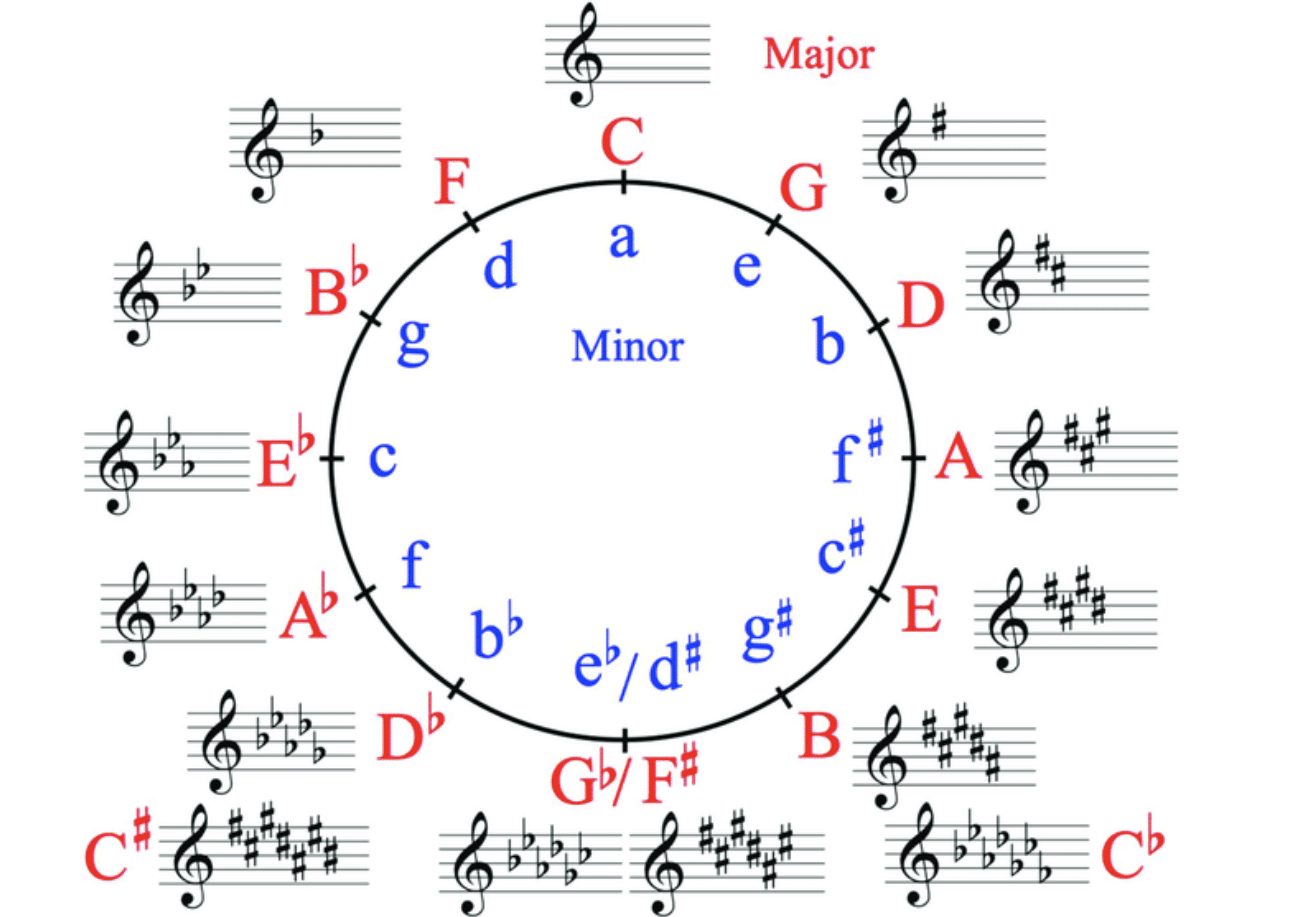
In the world of electronic music, the mood of a track often hinges on the choice between a major and minor key.
- Major keys resonate feelings of happiness and positivity (think the key of C major).
- Minor keys evoke a deeper, sometimes more introspective or melancholic feel.
Techno, with its pulsing beats and soundscapes, relies heavily on the emotional cues of either a major key or minor key.
A techno track in a major key like C Major might be energetic and uplifting, perfect for dancefloor moments.
Meanwhile, minor keys introduce an air of mystery, suspense, or even sadness; adding layers of emotional depth.
It’s essential, however, not to pigeonhole chords into “happy” or “sad” boxes…
The beauty lies in their creative interplay.
For instance, a progression that shifts from major to minor chords can elicit a complex set of emotions, adding richness to a track.
This balance between major and minor chords is a cornerstone of dance music 一 building tension and release.
Whether producing a club banger or a reflective tune, understanding the emotional weight of a major key/minor key is pivotal.
The same key in minor and major differ significantly, so play around with different variations.
-
The Significance of Triad Chords in Techno Chord Progressions

Triad chords, consisting of three distinct notes, form the foundation of harmony in techno music and make them sound good.
These basic chord structures provide clarity and solidity when you’re producing or writing music, which makes them an essential component of the genre.
There are primarily three types of triads:
- Major
- Minor
- Diminished
Plus, there’s augmented, as displayed above.
Each carries its distinct sonic fingerprint, enabling you to add complexity to your compositions, whether you’re writing EDM music or hip-hop.
Triads allow for more complex chordal extensions in progressive or melodic techno sub-genres (including pop music).
Their simplicity is their strength, making them versatile tools 一 whether used in their pure form or as building blocks for advanced harmonic structures.
Embracing the power of triads ensures a robust harmonic framework for techno tracks.
They balance complexity and clarity, ensuring the track’s harmony doesn’t overshadow its rhythmic elements.
-
How Diatonic Triads Create Catchy Chord Progressions

Diatonic triads (derived from the seven notes of a diatonic scale) are pivotal in creating memorable chord progressions in techno.
These diatonic triads set the natural emotional development of harmonics within a given key:
- Three in Major
- Three minor
- One diminished
They offer a palette of chords that inherently sounds good, cohesive, and fluid when played in sequence.
When crafting a techno track, using diatonic triads can provide an organic flow.
It ensures that the progression feels natural and grounded in its key, making the transitions between chords smooth.
Catchy techno and EDM anthems often rely on these diatonic triads.
Staying within this harmonic framework guarantees a memorable progression that lingers in listeners’ minds.
Sound Design: Making Your Chords Shine
Beyond the mere structure and progression of chords, the texture, timbre, and presentation of those chords can make all the difference.
Sound design plays a pivotal role in accentuating the characteristics of chords, turning basic harmonies into sonic marvels.
So, let’s jump in.
-
Using Your Piano Roll To Create Epic Chords
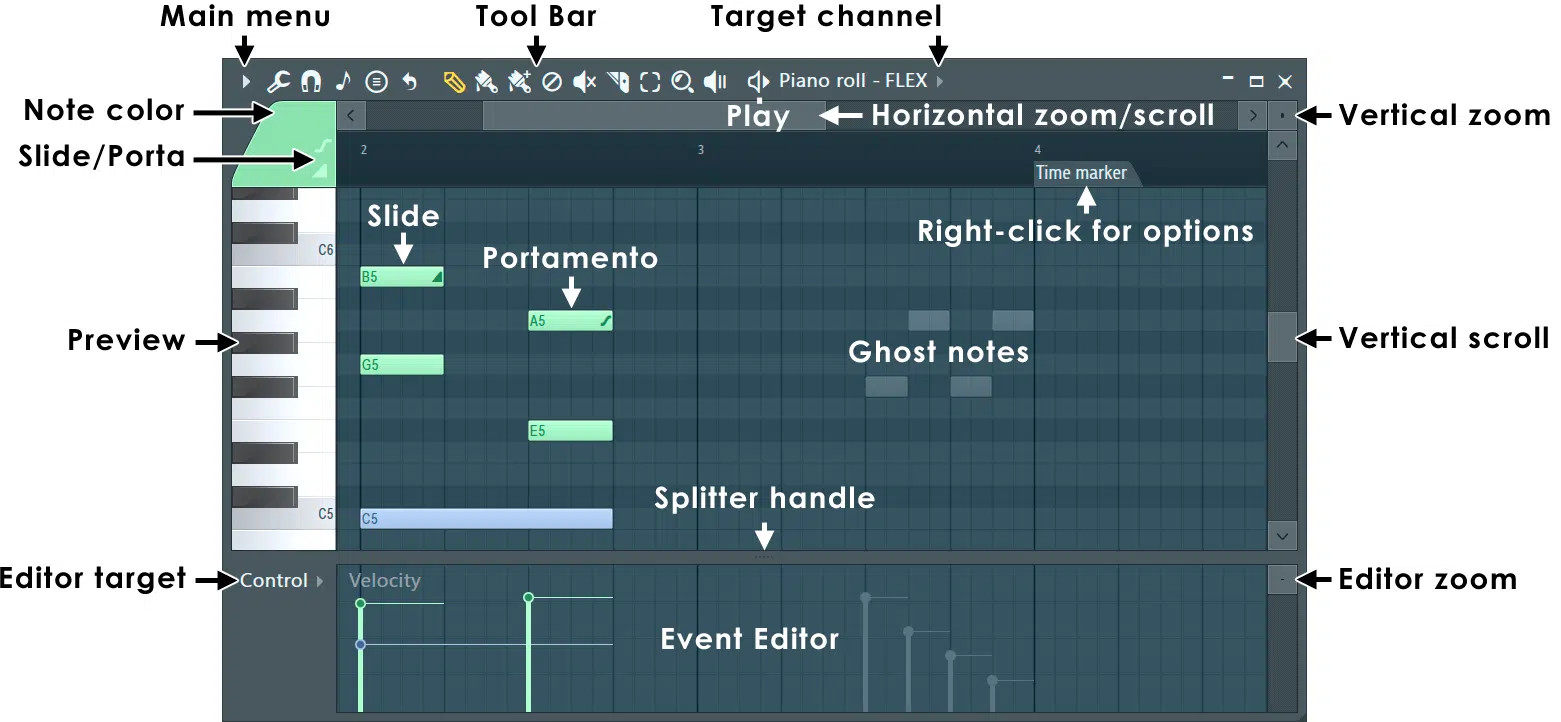
FL Studio’s Legendary Piano Roll
The piano roll in your DAW (Digital Audio Workstation) is a potent tool for chord creation and manipulation.
It provides a visual representation of MIDI notes, giving producers a bird’s-eye view of their chord structures and progressions.
Utilizing the piano roll, you can adjust the voicing of a chord 一 spreading out the individual notes (one note) over different octaves.
Manipulating a note’s position can create richer, fuller-sounding chords and offer a more expansive sonic landscape.
For instance, moving the third or fifth of a chord an octave up or down can give the harmony a fresh, airy feel.
Chord inversions are another advanced technique that can be done in your piano roll and are also super beneficial when writing chord progressions.
Especially if you’re looking to create something catchy yet highly unique.
Inverting a chord means rearranging its notes so that a different note becomes the lowest (or bass) note.
This can change the chord’s overall tonal quality, offering a unique twist to familiar progressions, which always sounds good.
The velocity tool, present in most piano rolls, allows producers to adjust the intensity with which each chord note is played.
By tweaking velocities, you can introduce a human-like touch to chords (whether a single chord, seven chords, or a six-chord progression).
This ensures that nothing sounds overly mechanical or robotic.
-
Sound Design Techniques to Enhance Your Techno Chord Progressions
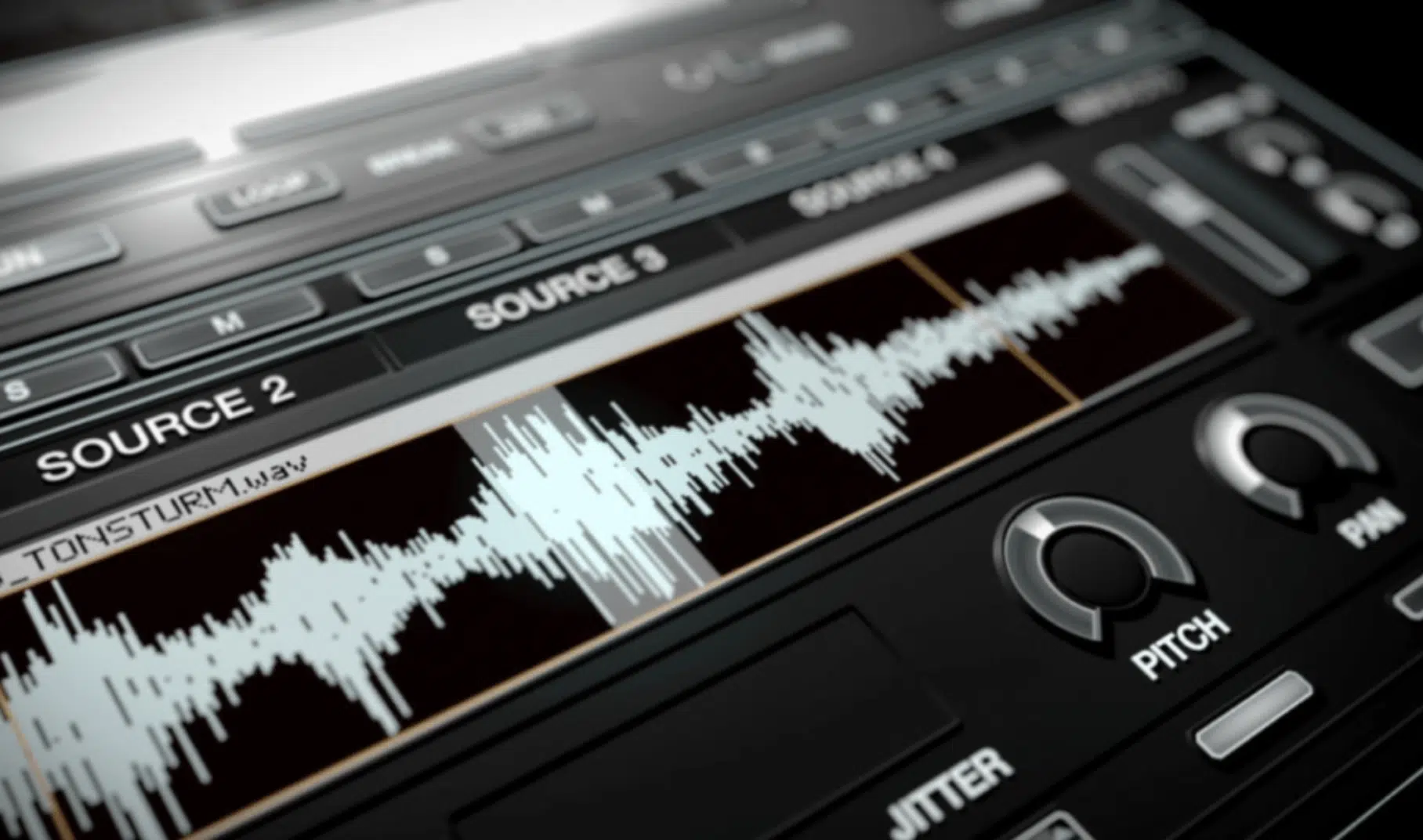
As the landscape of electronic music broadens, the tools and techniques available for sound design have grown exponentially.
Layering, for instance, involves stacking multiple synth patches or samples to craft a richer, fuller chord sound.
This sound design technique can add depth and dimension to your chords, making them more immersive and all-encompassing.
Audio effects such as reverb and delay can elevate a chord’s presence in the mix.
While reverb provides a sense of space and depth, a carefully timed delay can introduce rhythmic intricacies 一 making a chord progression more engaging.
Modulation effects, on the other hand, can introduce movement to your chords, like:
By subtly modulating the frequency spectrum or creating short time-based delays, these effects can make static chords feel alive and evolving.
Finally, EQ (equalization) ensures each chord sits well within the mix.
By carving out unnecessary frequencies or boosting certain harmonic overtones, you can create chord progressions that are both clear and compelling.
So, if you’re looking for that cheat sheet to make the same chord progression everyone else uses sound unique, it’s all about sound design.
5 Most Popular Techno and EDM Chord Progressions
In the world of electronic dance music, certain chord progressions have made a significant mark. It has become synonymous with iconic tracks and unforgettable moments on the dance floor.
So, let’s break down the 5 most popular techno (and EDM) chord progressions in the game.
#1. I-V-vi-IV
One of the most universal and versatile chord progressions when writing music, the I-V-vi-IV sequence can be heard across countless electronic genres.
It provides the perfect balance of tension and resolution, ideal for all styles of Techno and EDM.
Calvin Harris, in particular, has employed this progression in several of his tracks.
With its uplifting nature, the I-V-vi-IV progression offers a canvas for melodic exploration while maintaining harmonic consistency.
This chord progression:
- Starts with the tonic (I)
- Moves to the dominant (V)
- Transitions to the relative minor (vi)
- Resolves back with the subdominant (IV)
It creates an emotional journey for listeners 一 often eliciting feelings of euphoria and nostalgia.
Sound design choices (from lush pads to pulsating synths, combined with this progression) can define the mood of the track and help it sound good.
This makes it suitable for both festival main stages and intimate club settings.
#2. vi-IV-I-V
The vi-IV-I-V progression flips the script; starting with a minor chord before transitioning into major chords.
This creates an initial sense of melancholy that gradually evolves into an uplifting climax for which people go crazy for.
Many modern techno and EDM tracks, especially those in the progressive house sub-genre, utilize this chord progression.
It also resonates exceptionally well with younger listeners.
This is because it often characterizes the themes of struggle (helps to build tension) and eventual triumph standard in dance music narratives (the inevitable release).
For instance, tracks like “Stay” by Zedd and Alessia Cara employ this progression masterfully.
That song uses it as a foundation for memorable melodies and vocal lines.
The progression’s structure allows you to play with dynamics 一 building energy through rises and drops (which Techno is all about).
This ensures that the dance floor goes crazy and can make them hypnotized with just one chord progression.
#3. ii-V-I
Rooted deeply in jazz, the ii-V-I progression has found its way into techno, often delivering a soulful touch to an otherwise electronic soundscape.
The flow of this chord progression goes as follows:
- It begins from the supertonic minor (ii)
- Then, through the dominant (V)
- Ultimately, resolving to the tonic (I)
This sequence of events offers a sense of completeness 一 making it a favorite for tracks emphasizing melodic development and harmonic richness.
Techno classics, like Deadmau5’s “Strobe,” have subtly incorporated this progression for a good reason.
This is because it introduces moments of introspection amidst the relentless beats.
In techno, where the emphasis often lies on rhythm and timbre, using a progression like ii-V-I can add an unexpected yet welcome melodic layer.
Therefore enhancing your track’s overall depth and complexity.
#4. IV-V-vi
The IV-V-vi progression carries a sense of anticipation, building up with two major chords before resolving into a minor chord.
This creates a poignant, almost bittersweet atmosphere in the track.
Many modern songs have embraced this progression for its expressive power.
In the Techno and EDM world, tracks like “Scared to Be Lonely” by Martin Garrix & Dua Lipa subtly utilize this sequence, emphasizing the emotional climax in the chorus.
Using two consecutive major chords (IV and V) drives the progression forward 一 creating a sense of elevation and anticipation.
The subsequent shift to the minor chord (vi) delivers a contrasting emotion, often melancholic or reflective.
This dynamic interplay of chords lends itself well to tracks aiming for emotional impact.
It provides a harmonic framework that can accentuate poignant vocals or melodic synth lines.
#5. I-IV-vi-V
Melding uplifting major chords with the somber tones of a minor chord, the I-IV-vi-V progression is a versatile tool.
This is especially true when it comes to techno chord progressions.
Many techno hits experiment with this progression, allowing for a diverse range of emotional textures within a single track.
- Start with a solid foundational tonic (I)
- Move through the sequence culminating in the dominant (V)
One super popular example is “This Is What You Came For” by Calvin Harris ft. Rihanna.
This chord progression takes listeners on a roller-coaster of sentiments 一 fitting for the ebb and flow of a techno set.
Additionally, the progression’s structure offers an optimal balance between predictability and surprise.
This helps your song remain catchy and memorable for the listeners.
Final Thoughts
Techno, as an electronic music genre, stands out not just for its relentless beats but for its distinctive and often hypnotic chord progressions.
These progressions are the backbone, giving life to the pulsing rhythms and leading listeners on an exciting journey.
After this article, you’re now equipped with the knowledge of the most popular chord progressions and the underlying music theory to craft your unique take on this genre.
But there’s more to music production than just the chords…
To truly elevate your tracks, you need those subtle nuances and elements that captivate the ear.
With that in mind, we’re excited to let you in on a little industry secret: the Free FX Pack, containing 20 expertly crafted FXs.
From the energetic uplifters and dramatic impacts to the subtle downlifters and miscellaneous sounds, this pack is legendary.
Each sound is designed by seasoned producers and sound designers to ensure your tracks have that professional touch.
They’re the perfect add-ons for electronic genres 一 allowing you to infuse additional layers of sonic intrigue.
With these tools and insights, you can produce techno tracks that resonate, inspire, and set dance floors on fire.
So, get out there and make timeless techno tracks for the world to obsess over.
Until next time…







Leave a Reply
You must belogged in to post a comment.